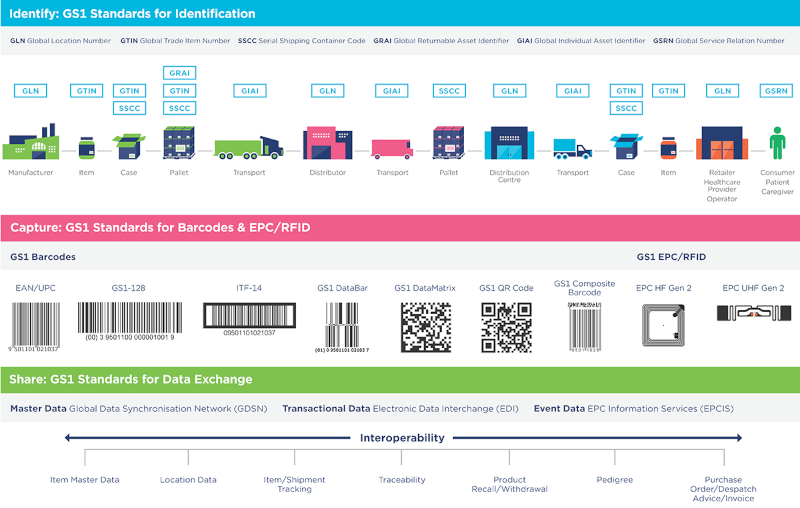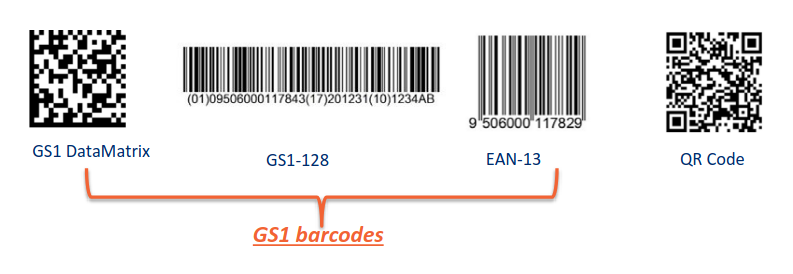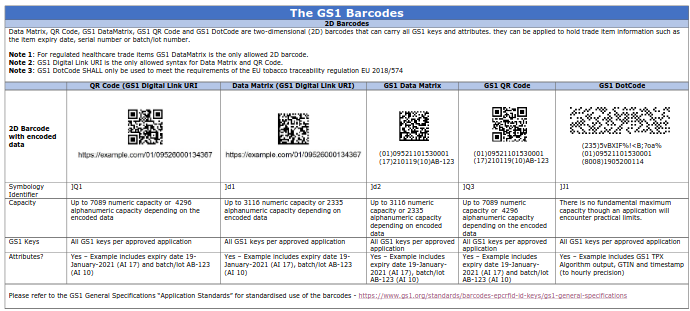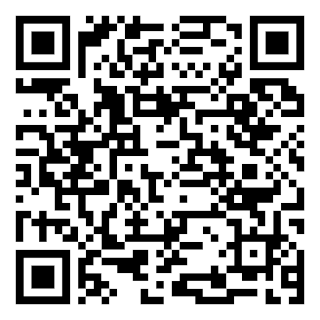myHealthbox Adds Support for GS1 DataMatrix and QR Codes with the GS1 Digital Link Standard
QR-code or DataMatrix ?
In a time marked by profound technological advancements, the healthcare industry is at the forefront of embracing innovation to enhance patient care, medication management, and overall efficiency. One such groundbreaking development is the integration of barcodes based on the GS1 Digital Link Syntax on the myHealthbox platform.
myHealthbox, a prominent healthcare information portal, has recently added support for these GS1 Digital Link Barcodes (both DataMatrix and QR-codes), marking a significant step forward in healthcare technology. This blog post explores what these GS1 Digital Link Barcodes are, the advantages they offer, and how their integration into myHealthbox benefits patients and healthcare professionals.

Introduction
For identification purposes, the GS1 DataMatrix is required by more than 70 regulations across the world for traceability of medicines. In countries where a globally harmonised traceability system for medicines is not yet implemented, GS1 linear barcodes are often used for identification of medicines.
Beyond regulations about identification and traceability for medical products, more and more regulators are developing requirements for accessing digital content about healthcare products. Mainly because mobile phones can today natively scan QR codes, these requirements often rely on a QR Code to be applied on the packaging to enable access to digital content but do not set a standard syntax for how the link to the digital content should be defined.
You can learn more about GS1 Barcodes and the Digital Link Standard in the GS1 position paper "Using GS1 barcodes to access digital content about healthcare products", available here.
GS1 2-Dimensional Barcodes
GS1 has standards for five 2D barcodes that are currently in use across a variety industries.
The two most widely recognised 2D barcodes are the QR Code (possibly implementing the GS1 Digital Link URI) and the GS1 DataMatrix, both be used to store the Global Trade Item Number (GTIN) as well as additional information such as an expiry date or a serial number.
The GS1 DataMatrix is already widely adopted in the Healthcare industry.
The QR Code (adopting the GS1 Digital Link URI syntax) can extend a product’s packaging, acting as a gateway to consumer information online such as ingredients, allergens and nutrition, sustainability information, recipes or usage instructions.

The most common 2D barcodes are:
| QR Code | GS1 DataMatrix |
|---|---|
| Symbol ID: ]Q1 | Symbol ID: ]d2 |
| Capacity: 7,089 Numeric capacity, 4296 Alphanumeric capacity | Capacity: 3116 Numeric capacity, 2335 Alphanumeric capacity |
| Supports GS1 Digital Link URI syntax | Support GS1 element string syntax |
| Supports all keys | Supports all keys |
| Supports attributes | Supports attributes |
 |
 |
Important
Both the QR Code and the GS1 DataMatrix can be read with a standard QR-Code reader like the one we already find on most smartphones and do not require a specialized barcode reader.
Both barcodes can also be read using the "Barcode reader" functionality found on the myHealthbox home page (just go to https://myhealthbox.eu and click on the barcode icon).
myHealthbox: barcodes support
The myHealthbox platform already supports most barcode types (1- or 2-dimensional) including QR-codes and GS1 DataMatrix, as of today we are adding support for 2D barcodes encoding a GS1 Digital Link URI (see more details in the picture below).
Companies that build and distribute digital leaflets using our eLeaflet platform can chose which barcode to use to link the package to the digital information.

When a QR-code or DataMatrix is printed on the production line additional information can be integrated in the barcode in most use cases the following additional parameters are added: serial number, expiry date, GTIN number and batch number.
These additional parameters can be read and forwarded to the eLeaflet by our resolver and used for a more personalized user experience.
The following additional services can be enabled when additional parameters are provided:
- product expiration alerts
- batch specific Patient Leaflets
- product verification.
Test drive it !
To see an example of a GS1 Digital Link QR-code just click on the following link https://myhealthbox.eu/gs1/01/08032551580443/10/ABCDEF/21/1234?17=221225 or scan the QR-code below

Frequently Asked Questions
1. Can I use the existing GS1 barcode on the product for both regulatory compliance and to access eLeaflets?
Yes, the existing GS1 barcode can be used to comply with regulatory requirements and to access product information online. One of the benefits is that the existing barcode can be used with NO changes to the packaging artwork.
2. Can the GS1 Digital Link URI Syntax standard work without a QR Code?
Yes, the GS1 Digital Link URI Syntax standard was designed to work with all GS1 barcodes without having to add an additional QR Code to the pack encoding a URL.
3. What shall I do if national requirements require the use of a QR Code to access online product information?
If a QR code is required to access online product information, we recommend that the URL encoded in the QR Code is based on the GTIN, and other data elements as needed, if possible this information should be encoded using the GS1 Digital Link syntax for maximum compatibility. For more information refer to the GS1 Position paper on Accessing Online Product Information .
4. Do I need a phone app to access eLeaflets when using the existing GS1 barcode?
No, most mobile devices today can scan QR-codes natively (your standard Camera application will automagically recognize QR codes). If other barcode types are used then the myHealthbox web-based barcode reader can be used to read most barcode types without the need to download a dedicated application.
5. What is GS1 Digital Link URI Syntax?
GS1 Digital Link URI Syntax is simply a way to encode GS1 identifiers, such as the GTIN, batch/lot, serial number and expiry date in the form of a URL. This creates a dual-function string of characters that is both a product identifier and a link to online information. For more information refer to the GS1 Digital Link standard.
Conclusions
The integration of GS1 Digital Link Barcodes, including GS1 DataMatrix and QR Codes encoded according to the GS1 Digital Link format, on myHealthbox is a significant leap forward in healthcare technology. It empowers patients and healthcare professionals alike by providing easy access to comprehensive information about healthcare products, it is also a significant step forward towards personalized healthcare.
The platform's dedication to innovation promises even more exciting developments in the future. Stay connected with myHealthbox to experience the future of healthcare information management.
Ready to experience the benefits of GS1 Digital Link Barcodes and QR Codes encoded according to the GS1 Digital Link format, on myHealthbox?
Visit the platform today, scan your medication, and take control of your healthcare journey. We encourage you to provide feedback and suggestions to help us make your experience even better. Stay tuned for more updates and announcements from myHealthbox.
More information about the eLeaflet solution from myHealthbox and how we can help you comply with these new regulations is available on the eLeaflet website